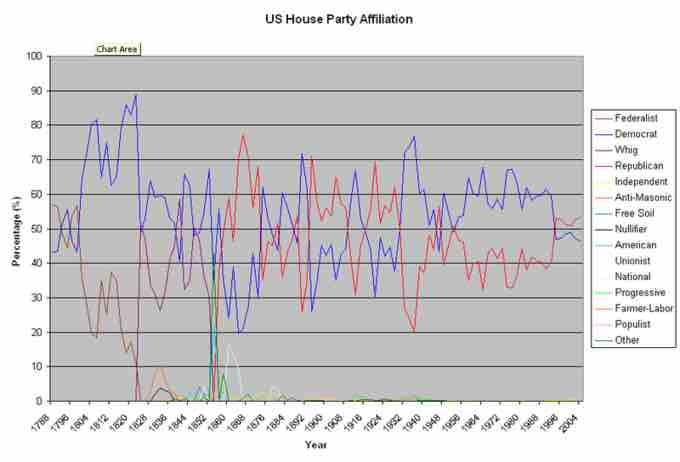Congressional elections
Elections to Congress take place every two years. Congress has two chambers in Capitol Hill . Although the two-party system preserves the dominance of the Republican and Democratic parties, there is no direct relationship between congressional party discipline and election years. The support and backing of the parties is not necessary and sufficient to win elections. However, candidates no longer have a congressional party discipline like in other historical times.
Capitol Hill
Capitol Hill, where bills become laws.
Senate elections
The Senate has 100 members, elected for a six year term in dual-seat constituencies (2 from each state), with one-third being renewed every two years. The group of the Senate seats that is up for election during a given year is known as a "class"; the three classes are staggered so that only one of the three groups is renewed every two years. Until the Seventeenth Amendment to the United States Constitution in 1913, Senators were elected by state legislatures, not the electorate of states.
Originally, senators were selected by the state legislatures, not by popular elections. By the early years of the 20th century, the legislatures of as many as 29 states had provided for popular election of senators by referendums. Popular election to the Senate was standardized nationally in 1913 by the ratification of the 17th Amendment.
Elections to the Senate are held on the first Tuesday after the first Monday in November in even-numbered years, Election Day, and coincide with elections for the House of Representatives. Senators are elected by their state as a whole. In most states, a primary election is held first for the Republican and Democratic parties, with the general election following a few months later. Ballot access rules for independent and minor party candidates vary from state to state. The winner is the candidate who receives a plurality of the popular vote. In some states, runoffs are held if no candidate wins a majority.
House of Representatives Elections
The House of Representatives has 435 members, elected for a two year term in single-seat constituencies. House of Representatives elections are held every two years on the first Tuesday after November 1 in even years. House elections are first-past-the-post elections that elect a Representative from each of 435 House districts which cover the United States. Special House elections can occur between if a member dies or resigns during a term. The delegates of the territories of American Samoa, District of Columbia, Guam, the Northern Mariana Islands, Puerto Rico and the United States Virgin Islands are also elected.
House elections occur every two years, correlated with presidential elections or halfway through a President's term. Typically, when a House election occurs in the same year as a presidential election, the party of the presidential winner will gain seats. On the other hand, there is a historical pattern that the incumbent president's party loses seats in elections that are held in the middle of a presidential term. This may be because the President's popularity has slipped since election, or because the President's popularity encouraged supporters to come out to vote for him in the presidential election, but these supporters are less likely to vote when the President is not up for election.
As the redistricting commissions of states are often partisan, districts are often drawn which benefit incumbent . An increasing trend has been for incumbents to have an overwhelming advantage in House elections, and since the 1994 election, an unusually low number of seats has changed hands in each election. Due to gerrymandering, fewer than 10% of all House seats are contested in each election cycle. Over 90% of House members are reelected every two years, due to lack of electoral competition. Gerrymandering of the House, combined with the divisions inherent in the design of the Senate and of the Electoral College, result in a discrepancy between the percentage of popular support for various political parties and the actual level of the parties' representation.

US House Balance OverTime
Chart shows the percentage of the United States House of Representatives held by various parties from 1789 until 2004. (as elected in the biennial elections) Occasionally terms are applied in a slightly anachronistic way, such as for Federalists and Democratic-Republicans in the first few years on the Congress, or for Whigs during Jackson's presidency. Notable features include the near absence of minor parties, and the narrowness of the current majority by historical standards.
2016 Congressional Elections
A total of 469 seats in the U.S. Congress (34 Senate seats and all 435 House seats) are up for election on November 8, 2016.
The big questionof the 2016 congressional election cycle is whether or not the Democratic Party will be able to regain control of the Senate. In order to take the chamber back, Democrats will need to gain five seats in 2016. The majority of vulnerable seats are held by Republican incumbents, many of whom are freshmen who were swept into office in the Republican wave of 2010. Additionally, Democrats only have 10 seats to defend in 2016, while 24 Republican incumbents are up for re-election.